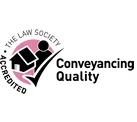Planning law solicitor, Issy Bainbridge, takes a look at some of the issues around Certificates of Lawfulness.
Holmes & Hills have recently advised a number of clients relating to the making of Certificates of Lawfulness applications where an unlawful use (by either a breach of a planning permission condition or a material change of use) did not occur for a period of time, making it more difficult to achieve a certificate. In short, a Local Planning Authority refused a Certificate of Lawfulness application, not made by Holmes & Hills, for reason that they considered that there has been a sufficiently long period of non-use to conclude that a previously long-running unauthorised use had been abandoned.
Note here that the Levelling Up and Regeneration Act 2023 has, as of 25 April 2024, increased the time to achieve immunity from planning enforcement action to 10 years in all cases, unless transitional provisions apply, for which the 4-year rule may still be relevant/engaged.
Starting with the basics, a Certificate of Lawfulness of Existing Use or Development can be used to confirm that an unauthorised use or development has existed for more than the relevant time to now be immune from planning enforcement action and, as such, be seen as lawful. If issued, a Certificate will confirm the lawful planning status of the relevant land and/or building.
There is a separate type of Certificate to confirm a proposed use or development as lawful; for example because it falls within permitted development rights or would not amount to ‘development’ requiring full planning permission.
This update concerns the former i.e. Certificates seeking to confirm as lawful, development that has already taken place.
The case of Ocado confirms that once the relevant enforcement period has passed there is no need for the unlawful use (whether by a material change of use or breach of condition) to be continuing at the date the application is made. However, there must not have been a further material change in or of the use between post-lawfulness (by passage of time) and pre-application. Simply put, no application can be made if the use has been lost by abandonment, a subsequent change of use or a creation of a separate planning unit.
Turning to the topic of this update, in considering whether a use has been abandoned, case law provides that regard should be had to the following:
As with any certificate of lawfulness, strong evidence is key. This is because it is for the applicant to demonstrate their case on the balance of probabilities. Even if an applicant can make their case as to why [x] use did continue for the required [y] period of time, it is considered best practice to confirm why there is no other reason why a Certificate cannot, or should not, be issued.
Consideration should be given, not only what happened in the relevant 4 or 10-year period, but what may have happened (or not) since then. Care should be taken to ensure that there is no potential “deal-breaker” in a Certificate application for reason of the claimed lawful use being lost for reason of a new, intervening use, or the previous use having been “abandoned”.
Holmes & Hills has a specialist team of planning solicitors who regularly advice clients in respect of the lawful planning status of land and/or buildings and, if a case has sufficient merit, in preparing and submitting an application for a Certificate of Lawfulness.
Call us on 01206 593933 today to speak with one of our planning team. Or complete the form below.






A Mackman Group collaboration - market research by Mackman Research | website design by Mackman